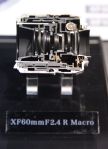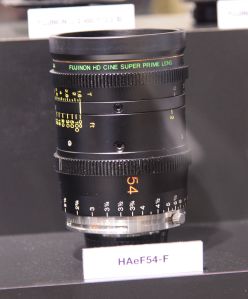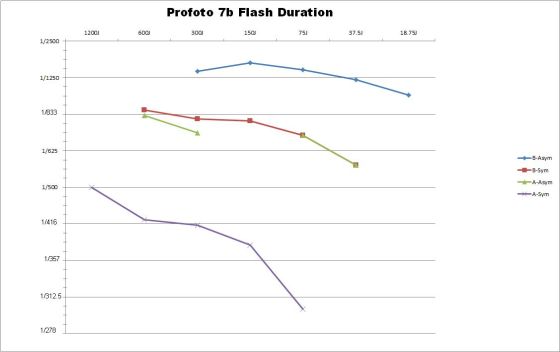I took off of work and went to Cologne for Photokina on Friday. Photokina is held every two years and is the largest photo tradeshow in the world. Unlike a lot of tradeshows, they let the general public in. I played the part of the general public in this exhibition. It seems larger to me than CES.
I started from the North hall so the first thing I saw where there were several analog photography companies with booths including Foma. Foma films and papers are available at Freestyle in the US. Fotoimpex/Adox showed off a new film called ‘Silvermax‘ which claims 14 f-stops of exposure range. They had some B&W slides on a light table which looked pretty impressive. I will definitely shoot some Foma when I get back to the US, and maybe some Adox Silvermax, if I can find it.
Hahnemühle had an interesting booth:
I am not sure exactly what is going on here but since Hahnemühle makes paper, I guess that is the concept.
Schneider had a kit to add lens adapters to your iPhone. A must for the hipsters! Ira Tiffen is apparently working for Schneider now. Interesting. The big news for Schneider was they had a line of DSLR lenses they will release next year.
Ira Tiffen is apparently working for Schneider now. Interesting. The big news for Schneider was they had a line of DSLR lenses they will release next year.
I had wondered why Schneider never followed Zeiss into making DSLR lenses. Well, now they are apparently. Schneider made some great lenses for the F&H Rollei 6000 series. DHW Phototechnik is the new name for the company making the Rollei TLR and Rollei 6000 series cameras. They had a new version of the Hy6 with an 80 megapixel digital back. I spoke briefly to the director of the SLR cameras at DHW. I get the impression things are going okay for them.
A friend asked me to take a look at the Nex-6, but I kind of got distracted at the Sony booth.
Sorry Lars, I didn’t look through the Nex-6 to check out the viewfinder, but here’s a static shot:
Sigma had a booth where you could give the staff your ID and borrow a lens and shoot it. I picked the APO Macro 180. This lens was supposed to ship in March of this year but has been repeatedly delayed. It appears sharp.  The autofocus is pokey, but you should be shooting macro in manual mode anyway. Unfortunately, it appears to have a tendency to flare:
The autofocus is pokey, but you should be shooting macro in manual mode anyway. Unfortunately, it appears to have a tendency to flare:
Canon debuted the S110, which is a continuation of their S series. I have an S90 and love it. The Powershot S110 adds Wi-Fi.
Fuji added a new camera to their X series of cameras, the XE-1. They put a major emphasis on showing how lots of other lenses can work on the X series camera. You could even check other company lenses out on a XE-1 with a dramatic sequence of carabiners being attached to counters and photo ids given to staff.  I find this interesting, since most people rave about how good the Fuji lenses are but complain about their manual focus performance and autofocus speed, which this does nothing to address. Fuji had their lens bits on display:
I find this interesting, since most people rave about how good the Fuji lenses are but complain about their manual focus performance and autofocus speed, which this does nothing to address. Fuji had their lens bits on display:
Fuji also showed the XF1 which is like Canon’s S90/95/100/110 series but with upgraded materials.
Fuji also showed some of their Cinema lenses, which would probably go over better at something like NAB.
You can see that Cinema lenses have some unique features, including a gear so that focus can be adjusted during a shot via a gear mechanism. There are lots of witness marks on the barrel. Crew will measure out distances from where the talent stands and then use the witness marks to focus very precisely. There are screws to allow the lens to be opened by a technician and cleaned. And, it can be yours for only $28,800.
Panasonic debuted the Lumix GH3. Again, unfortunately I got distracted and forgot to look at the camera.
Wait, was that the Canon booth? Anyway…Moving on to professional strobe equipment. Strobe equipment typically have long product lifetimes but there were several product announcements at Photokina.
Profoto is kind of regarded as the standard bearer for pro flashes, in the US at least. Every rental house has Profoto equipment, they were one of the first to work on multiple voltages, they have a very short flash duration because they charge the flash capacitor to 900V on the pro models, instead of 450V like most other flash manufacturers (see my last post) they are built like tanks, and they are repairable. And expensive. So if you think your B3 is not expensive enough, now you are lucky because you can get a B4!
Profoto was mobbed, but somebody named Sven was kind enough to answer my questions. The B4 is a 1J to 1000J professional battery or mains powered strobe pack. Both lamp heads are completely asymmetric. The thing has a ~30V battery and weighs 9.8 kilos, which is more than the B3 (8.8 kilos), and it provides 80 fewer shots at full power, with less energy (1000 vs. 1200J). While I’m on my soapbox, the thing is back in the stone ages of film-based photography when I was lugging 7b and 7b-2s around, you almost always had one pack for each head, which makes me wish people would make full-featured packs which weighed less and focused less on having full asymmetry in the pack. Just get two packs instead! The Acute 600B is not an option because it has poor flash duration. The B4 does have some advantages though, the flash duration is (claimed) to be from 1/5500 to 1/2000 in ‘normal’ mode (although those are t0.5 numbers) and from 1/25,000 to 1/11,000 in freeze mode (again t0.5) which is mighty quick. It also charges in 45 minutes, and has ‘unlimited’ flashes when plugged into the mains. I would have liked to have seen an LED light source for the modeling light so that the entire battery wouldn’t be depleted in about 10 minutes on location with the light on. LED technology has evolved quite a bit in the past few years. I think that is the biggest thing I don’t like about this pack. But, like all Profoto equipment, it is nicely built, will be available everywhere for rentals, and will undoubtedly be very expensive. Sadly, at least in Los Angeles, more and more people are moving to cheaper platforms like Paul C. Buff. BTW, for the guys at Profoto who won’t read this, at one of the fly-by-night China exhibits I sourced a LiFePO4 battery for $50 that will fit my 7b and will try installing it when I get back to LA. It is probably the same battery Profoto sells for $1100. If I get lucky, the pack won’t blow up.
Bowens came out with their Creo line. Bowens products are sold in Calumet stores in the US. They are more affordable than Profoto but I wasn’t happy with their offerings. But the multivoltage Creo have very fast flash duration, and can recycle in .5 to .9 seconds for the 1200J and 2400J packs, respectively. Unfortunately, these suckers are heavy, 12 kilos for the 1200 and 15.35 for the 2400. The Profoto 7a 1200 and 2400 are 9 kilos and 12 kilos respectively.
Hensel came out with the Nova DL 2400 and DL 1200. These packs are relatively light, at 7.15 and 8.5 kilos, although not fully asymmetric.
Elinchrom showed their Quadra hybrid, which has a lithium battery and is very light (only 2 kilos) and, which does have an LED modeling light.
Broncolor showed the Move 1200 L pack which weighs only 6 kilos with the MobiLED head which again features an LED modeling light:
Broncolor is famous for being even more expensive than Profoto. They are one manufacturer who state flash duration @ t(0.1), however, their numbers at full pack power are not that impressive.
Outside, some birds of prey were on exhibit.
So, that was Photokina. It was good to see some interest in analog photography in the 2nd half of 2012. Many incremental improvements to products like the S110 adding WiFi. Lots of product announcements. Maybe they should have Photokina every year since the market seems to be accelerating life cycles of products? Would I buy anything? Obviously, I haven’t mentioned the new Leica M camera or the new Canon DSLR which tells you I wasn’t interested; I like the Nex-6 price point but for right now I’m happy with my Nikon D800 and my Canon S90.
Filed under: Photography, strobe lighting | Leave a comment »


















